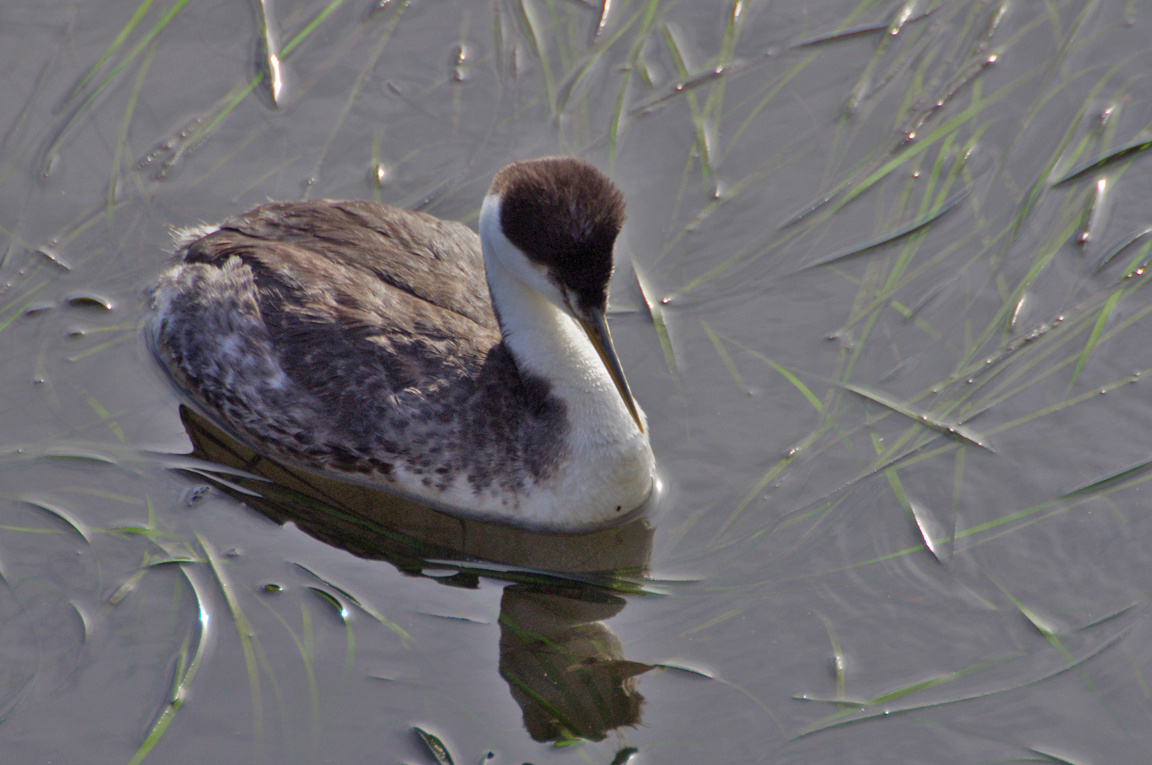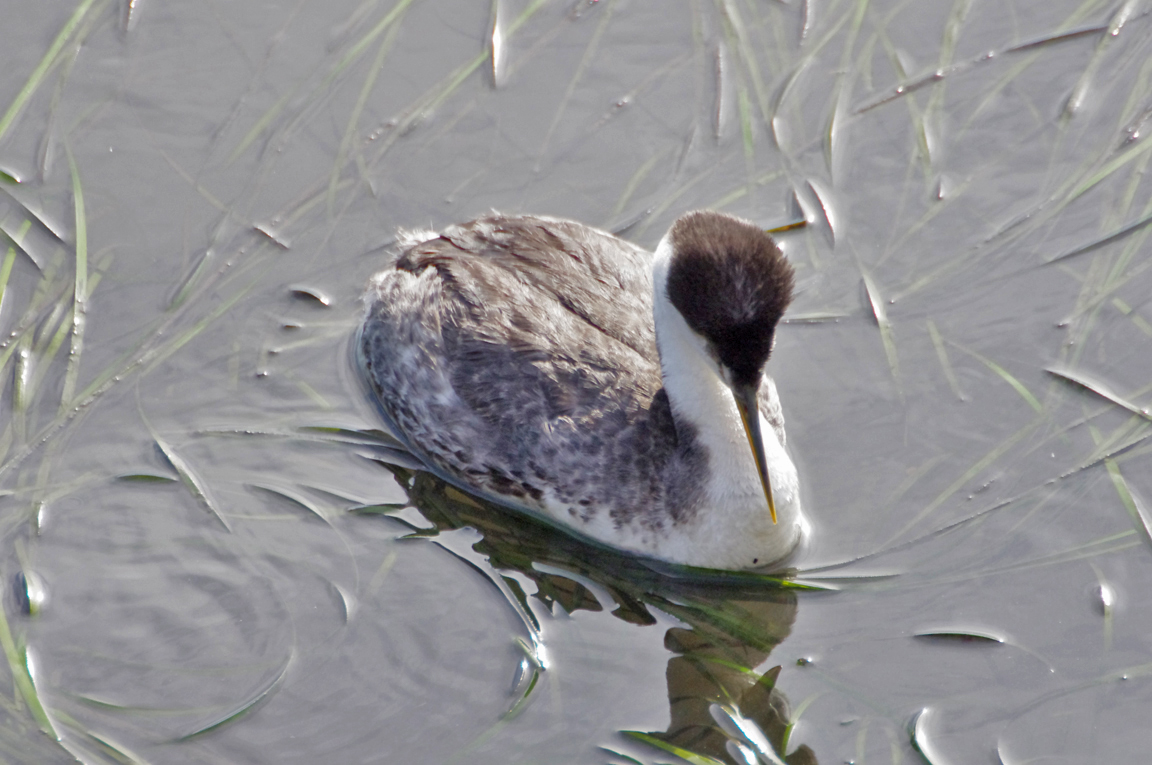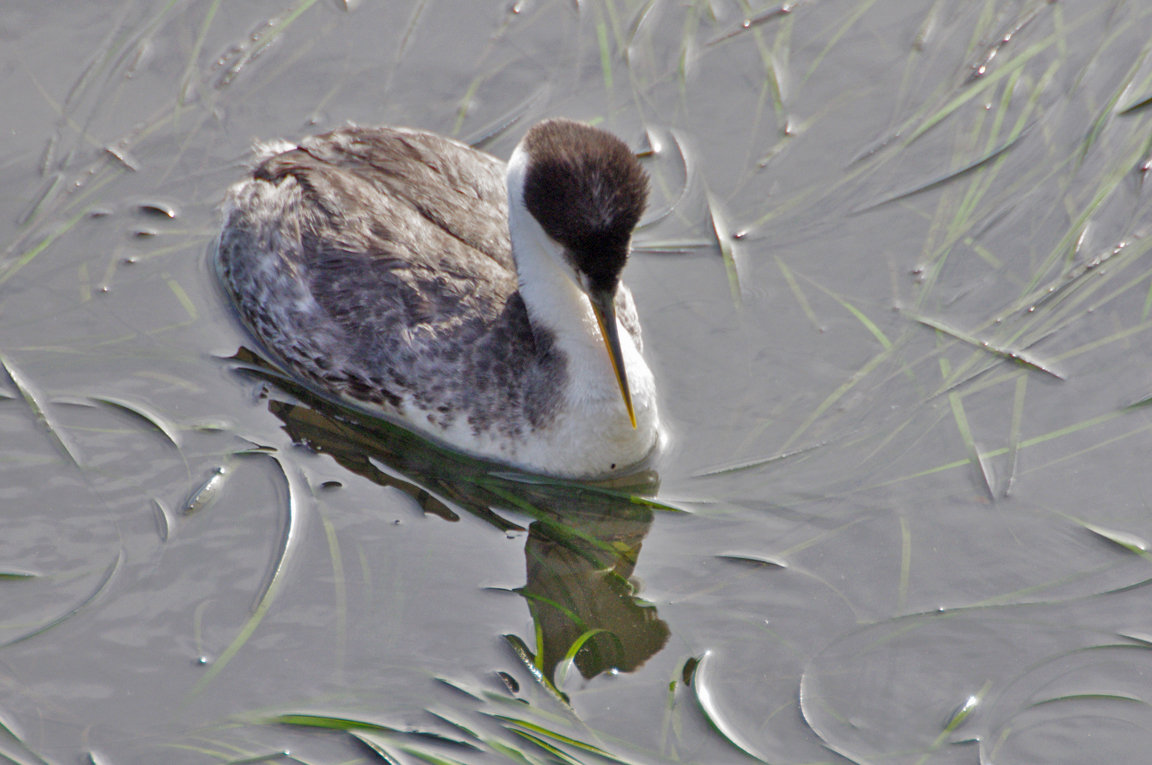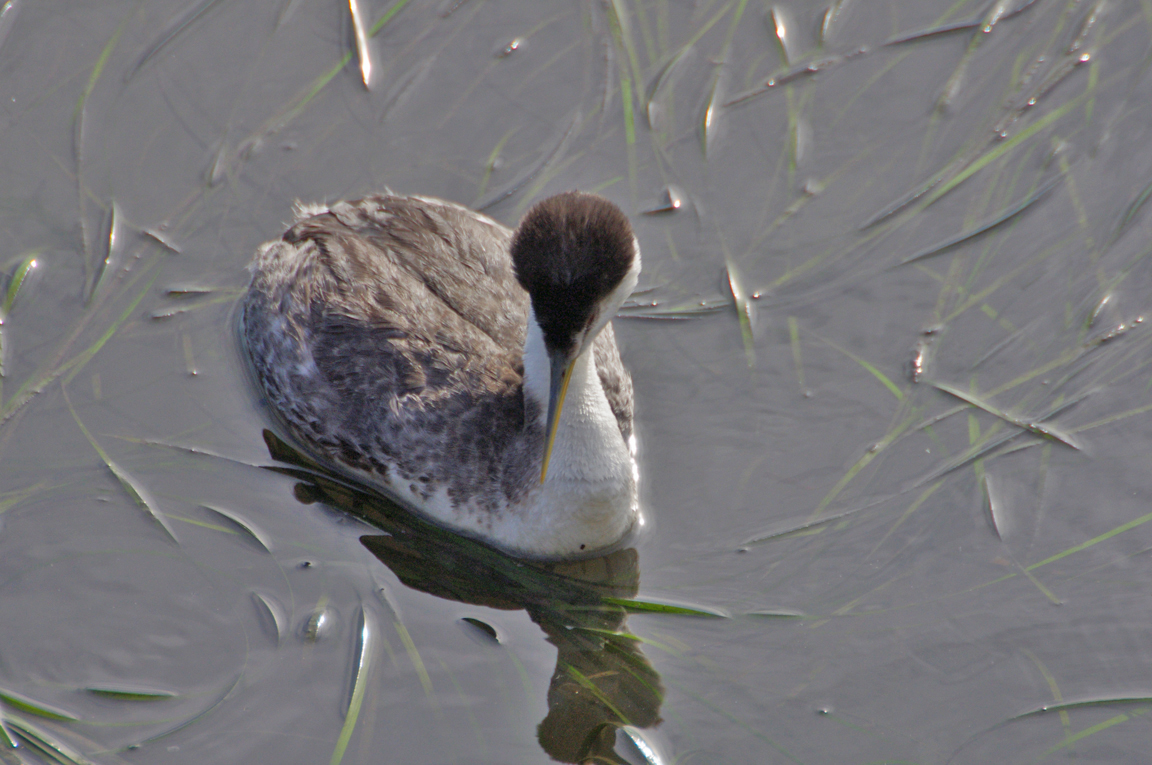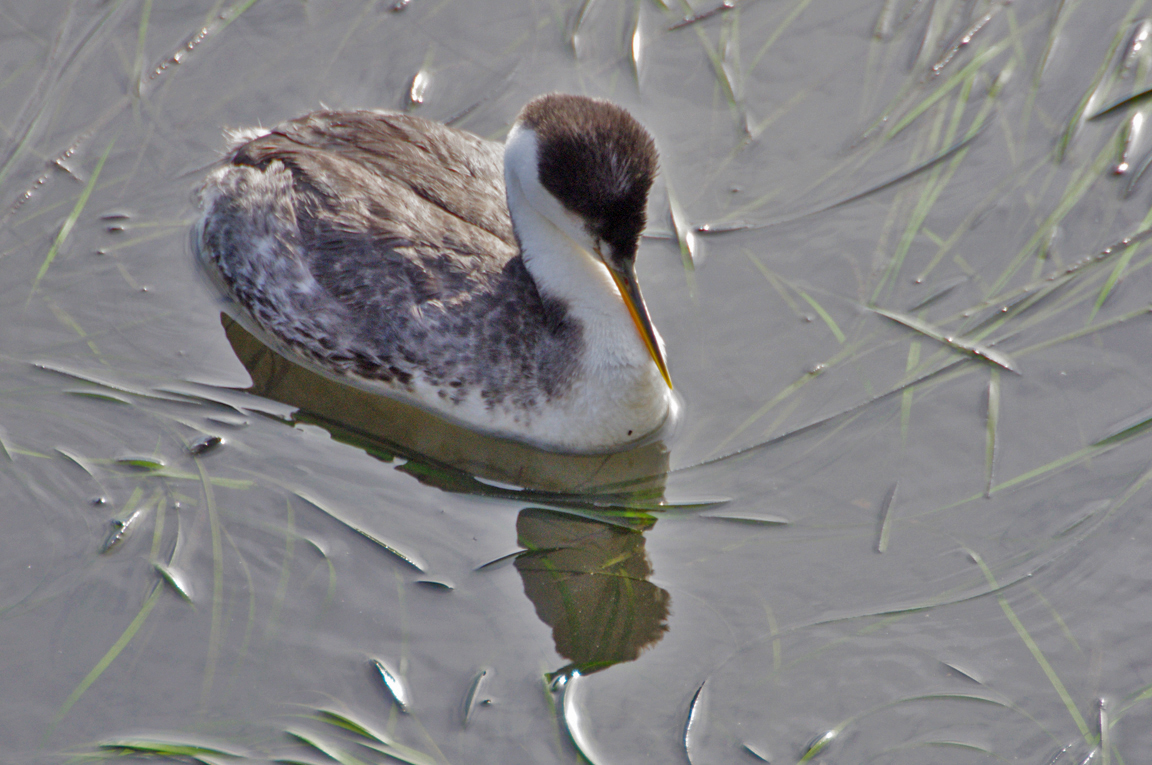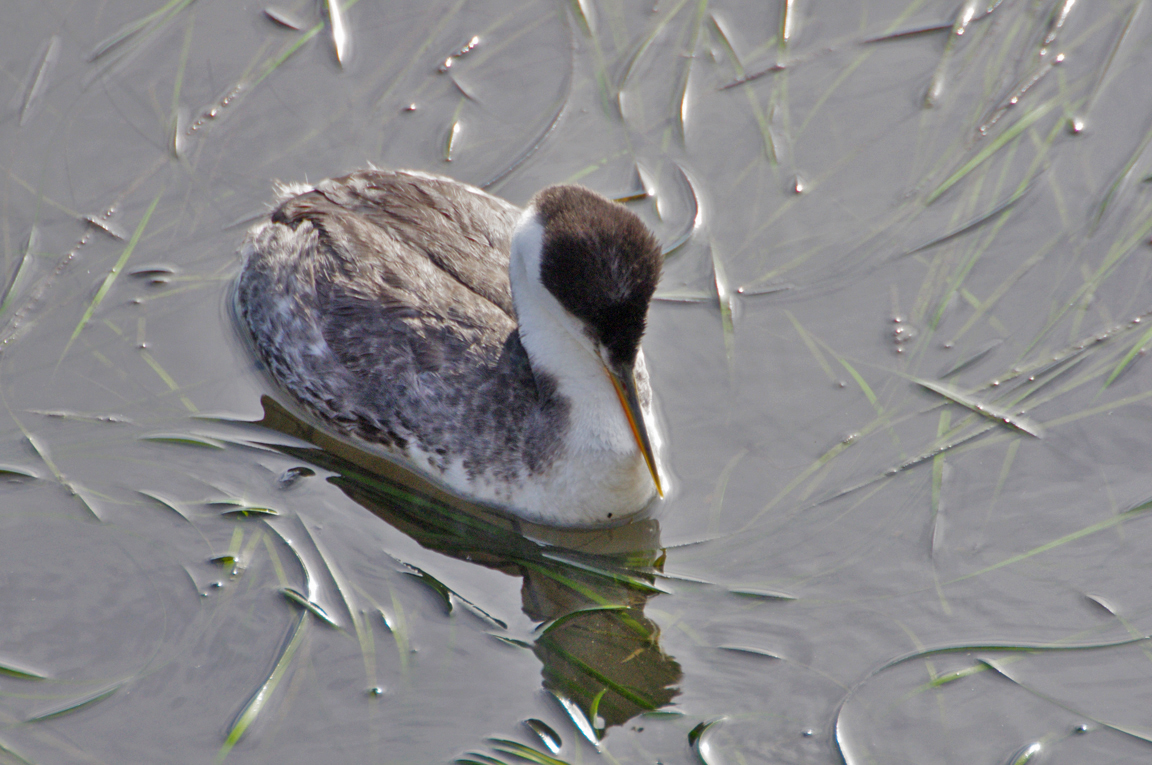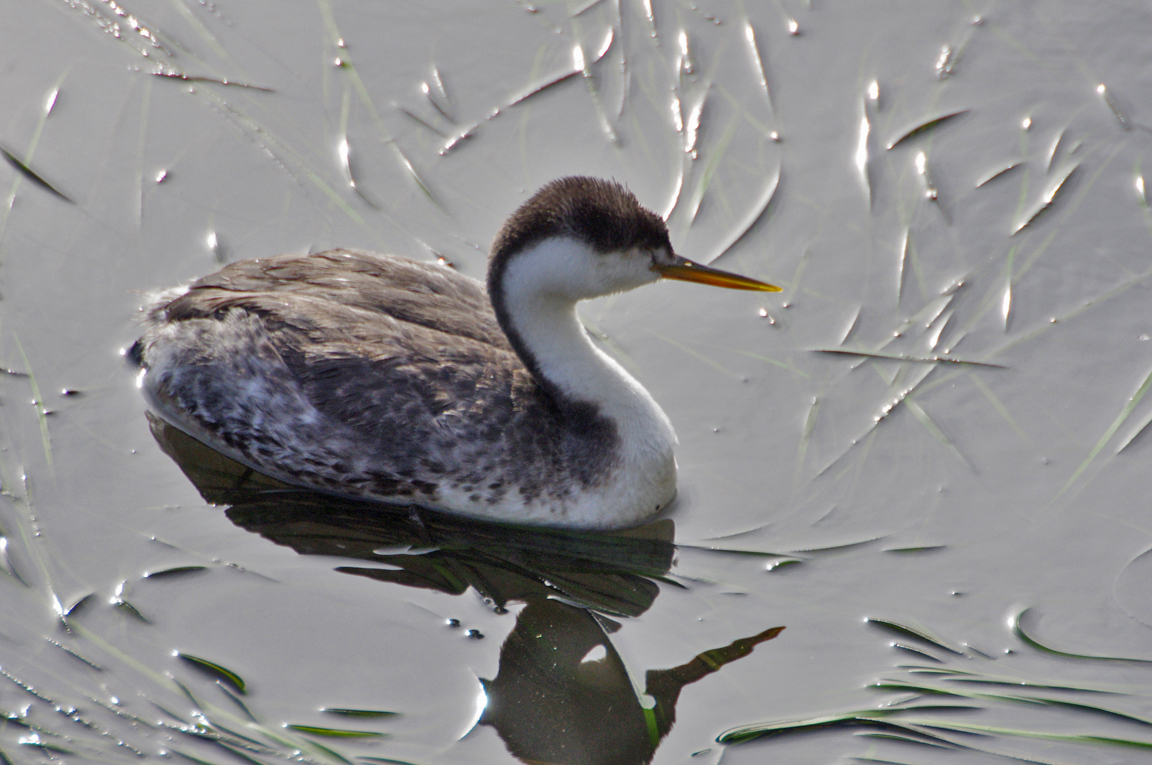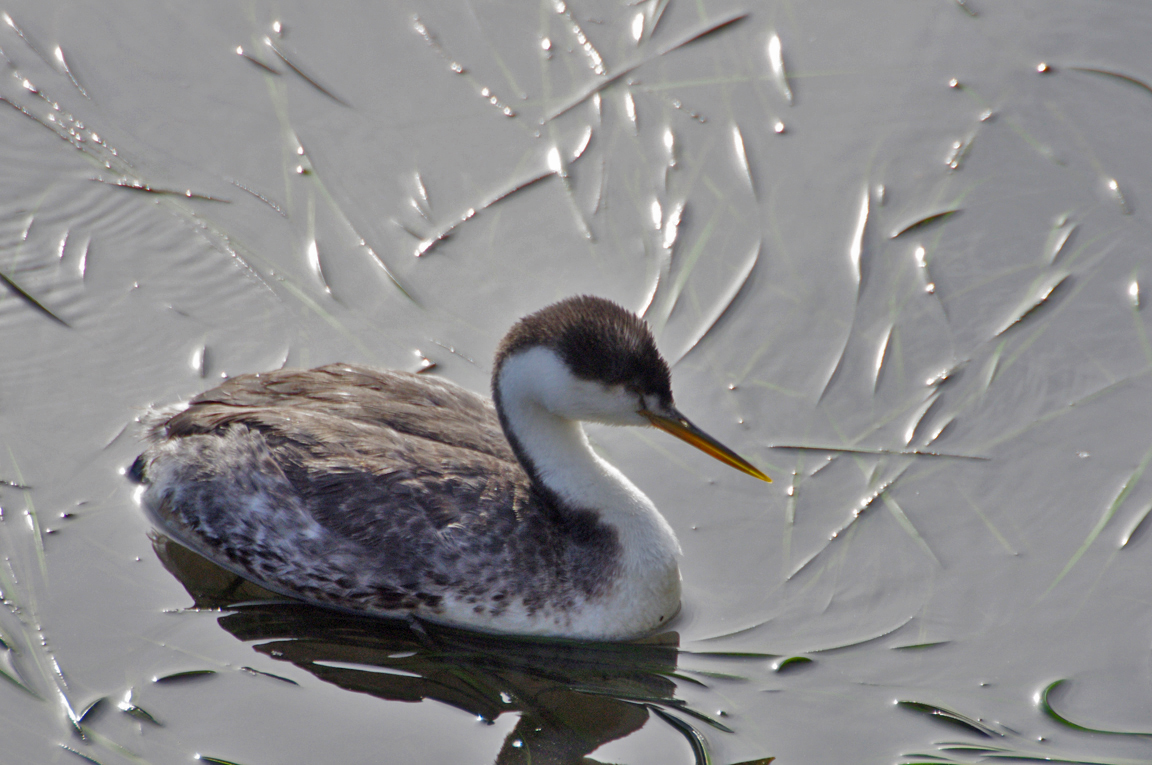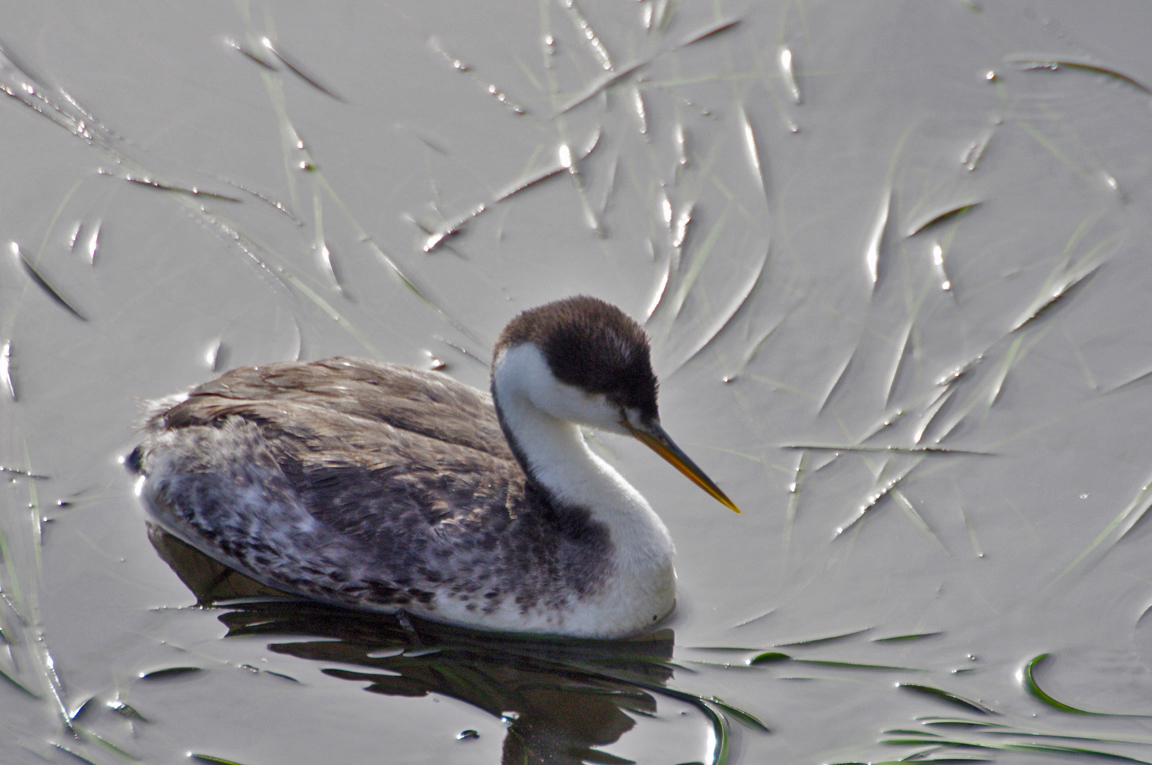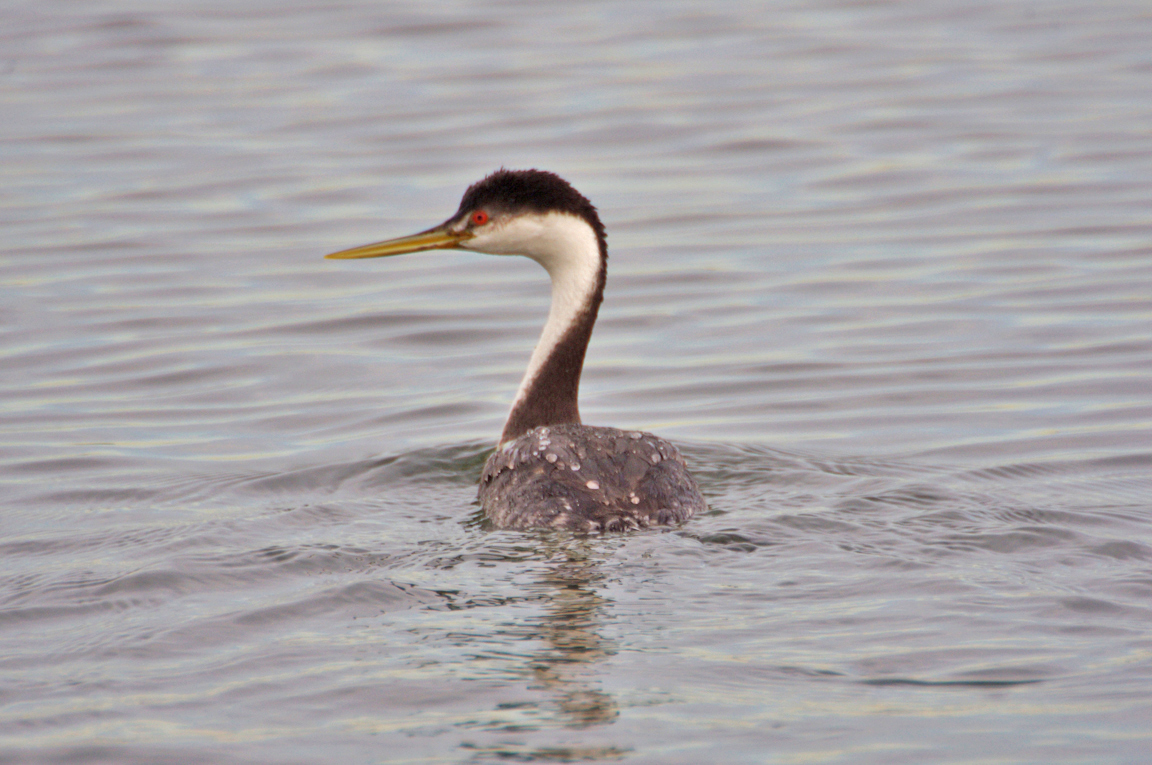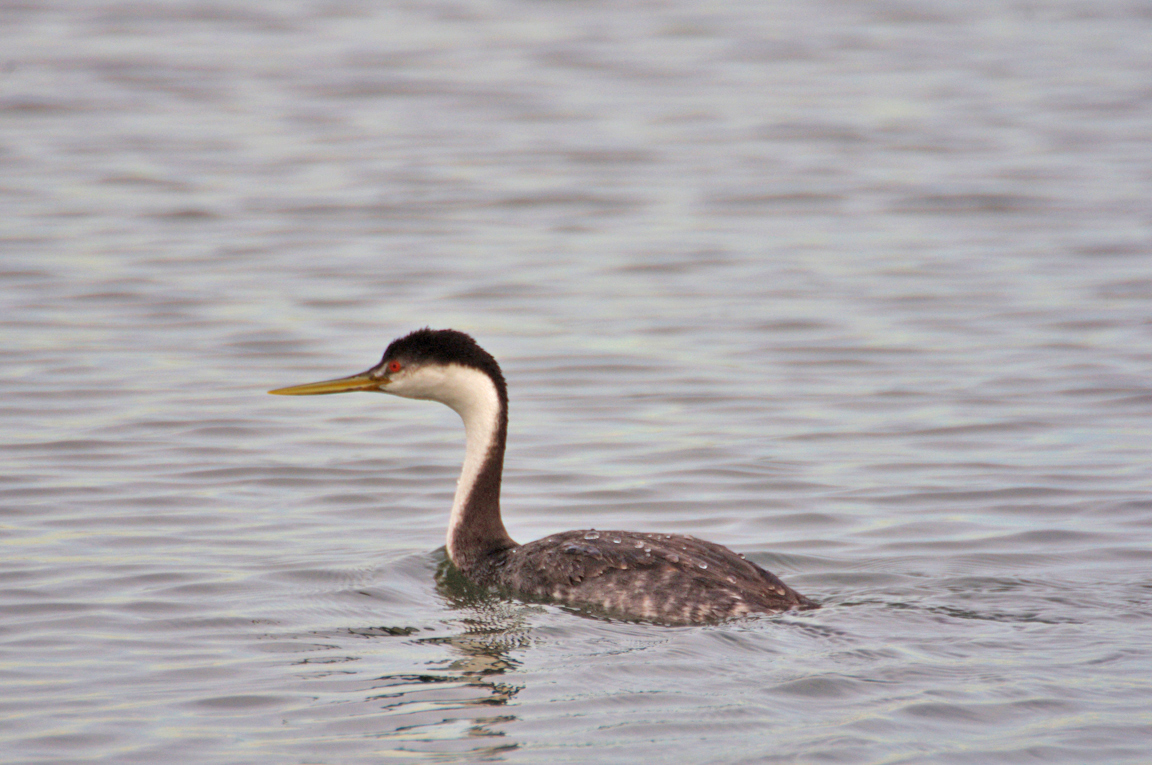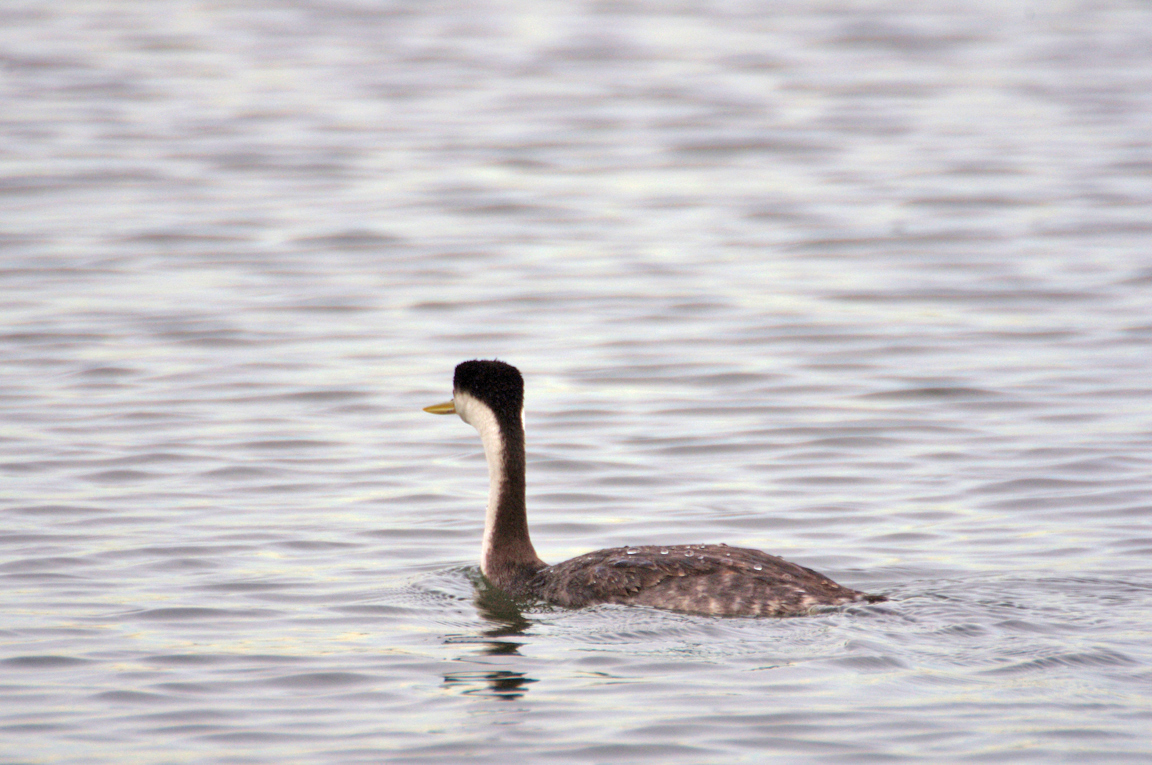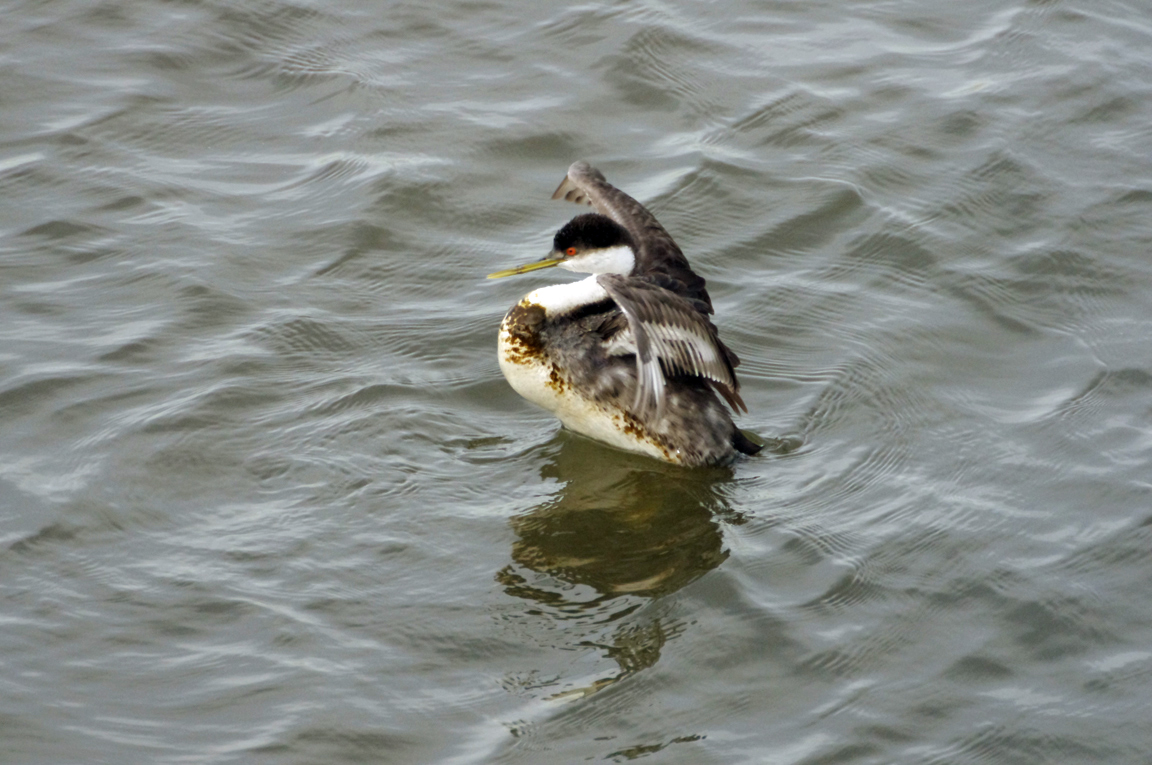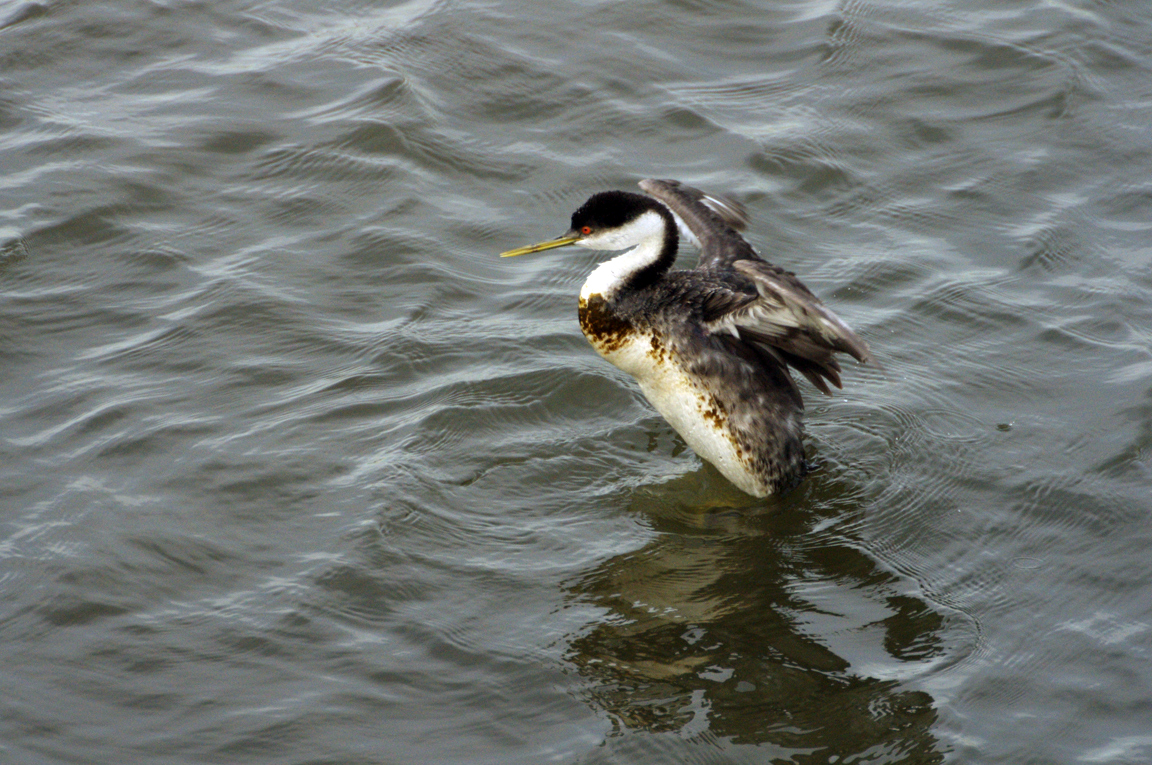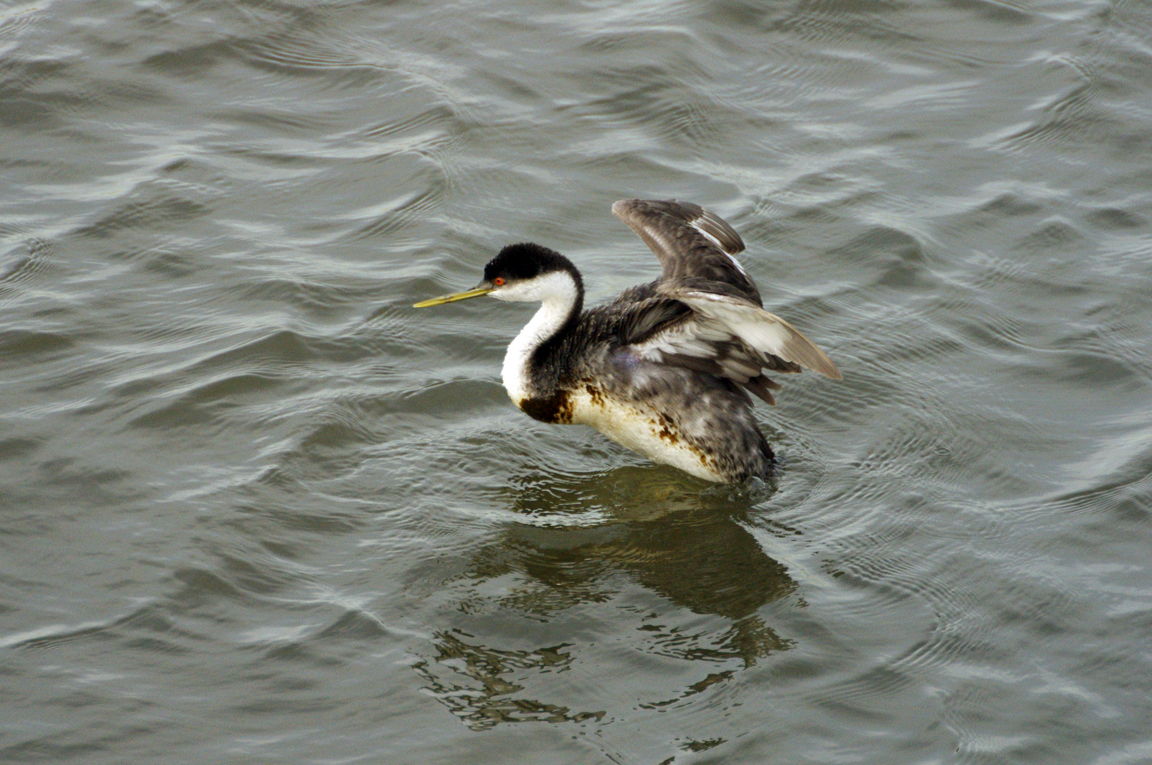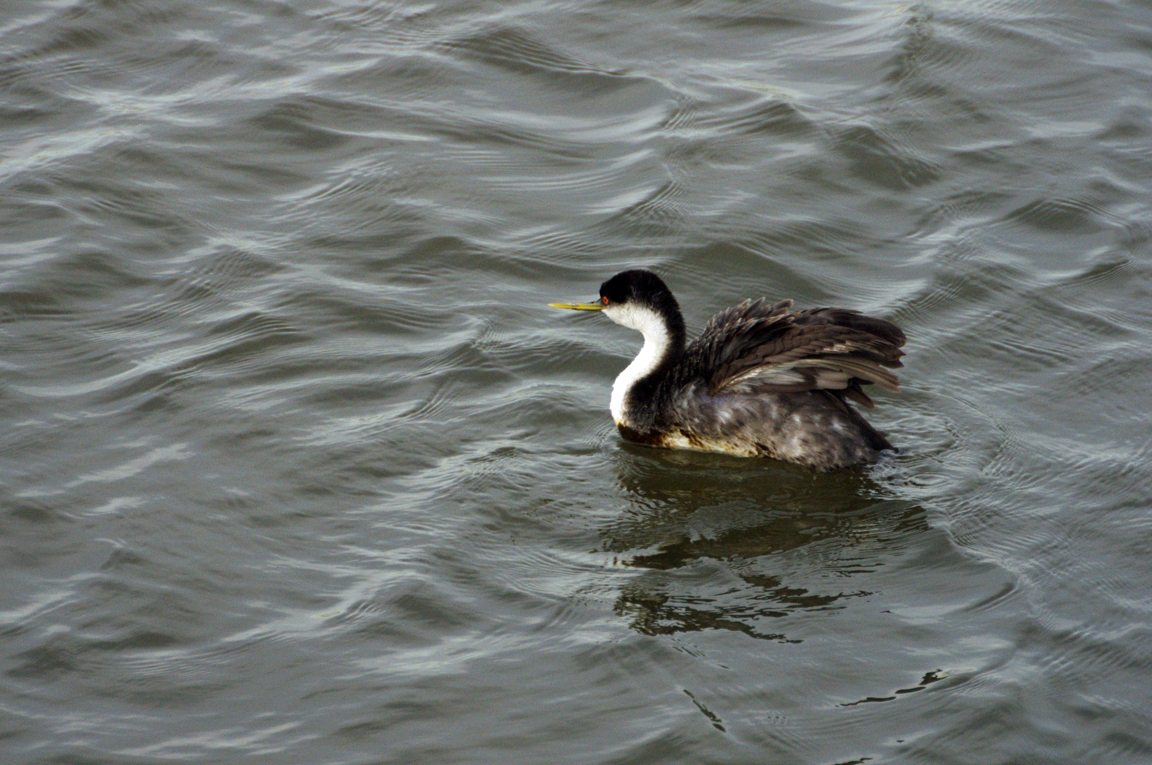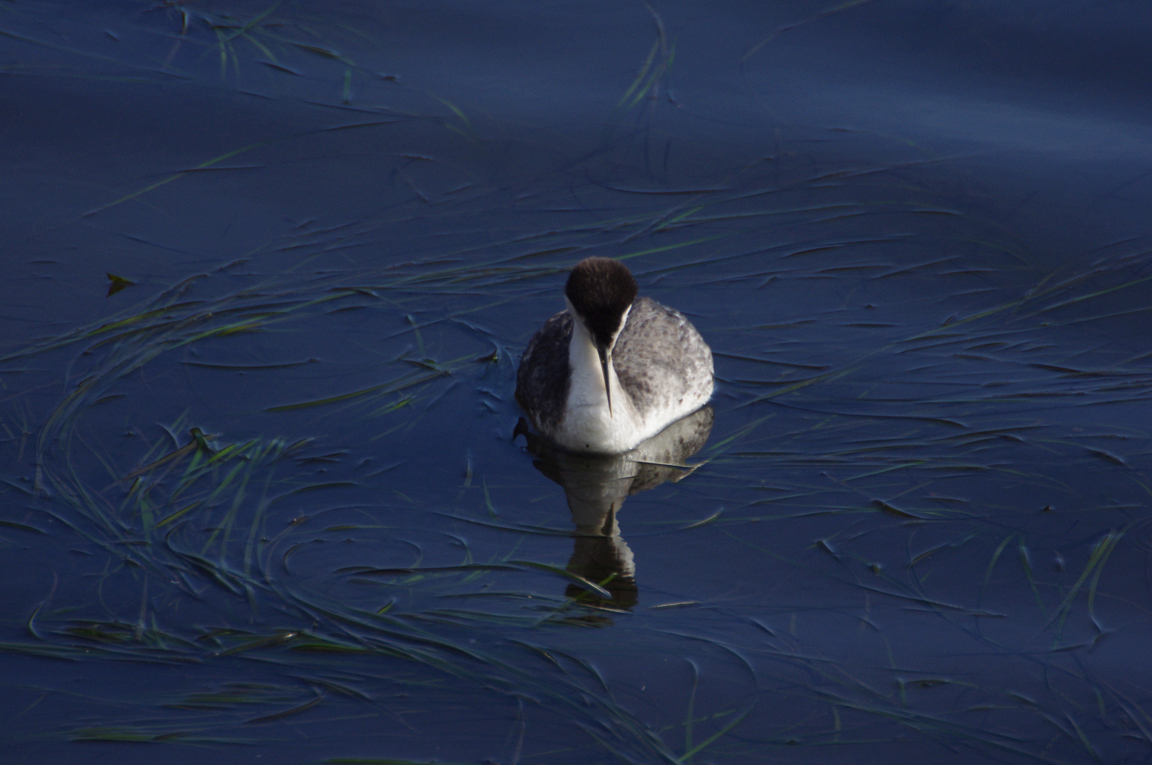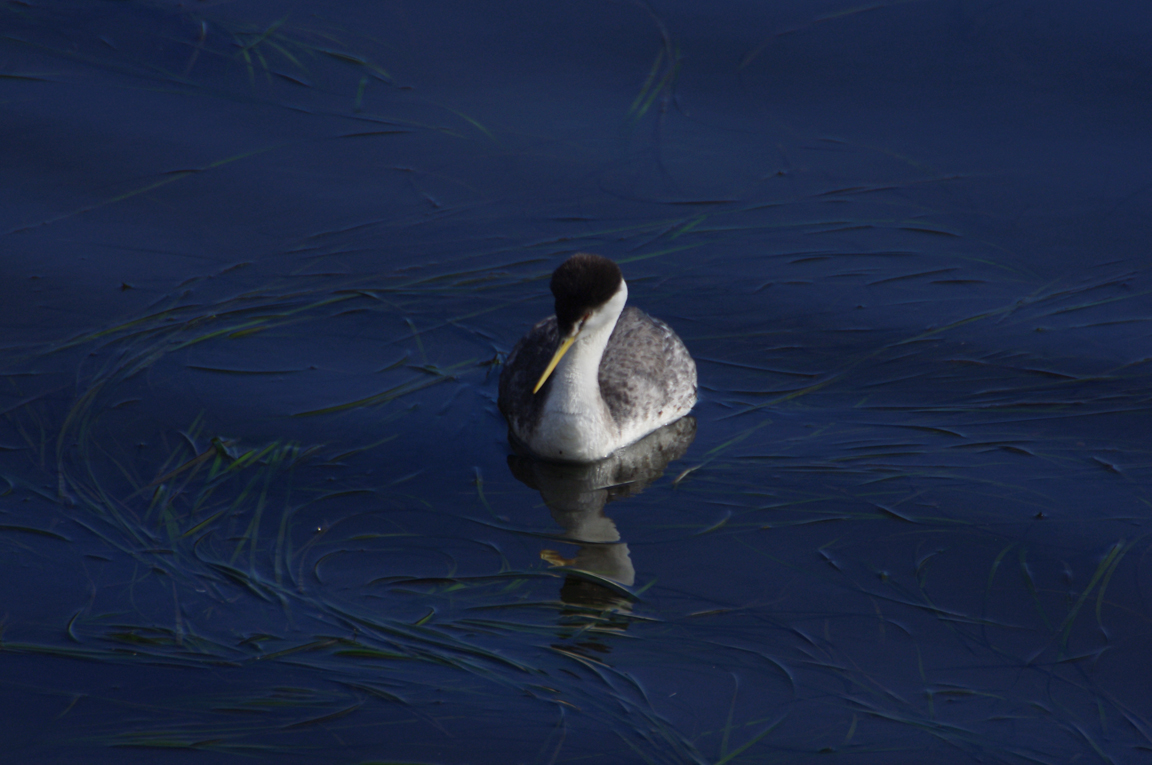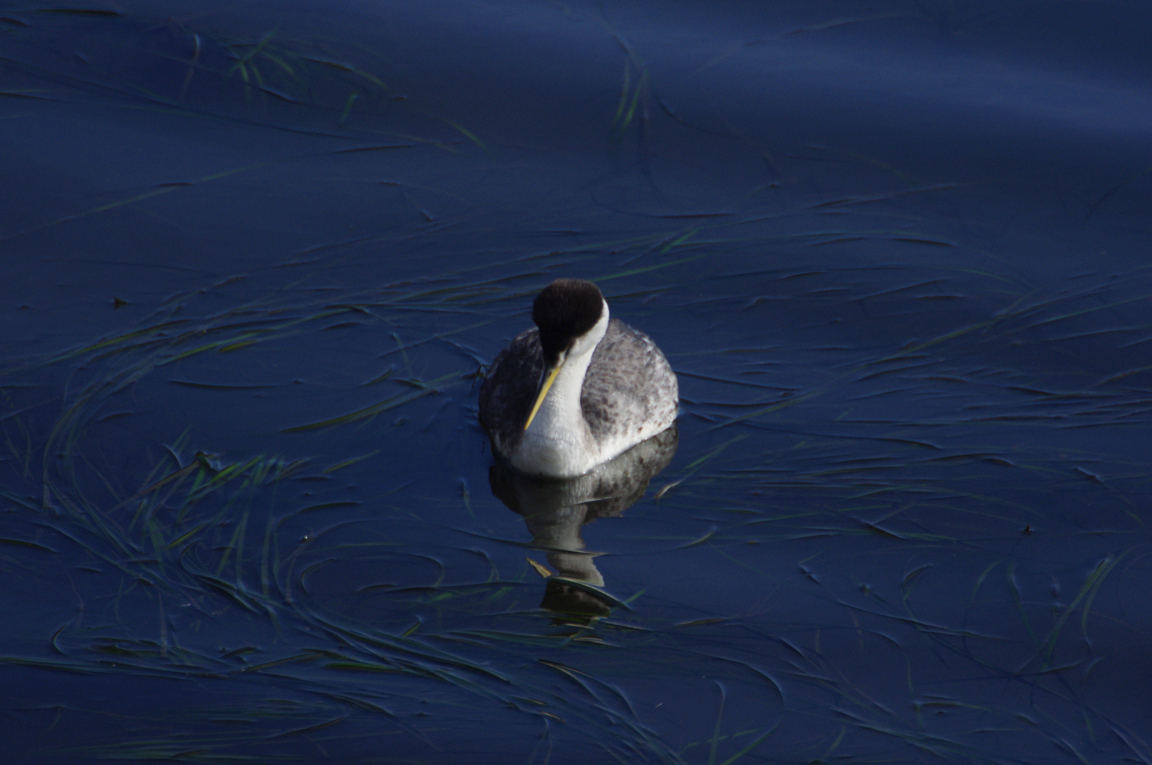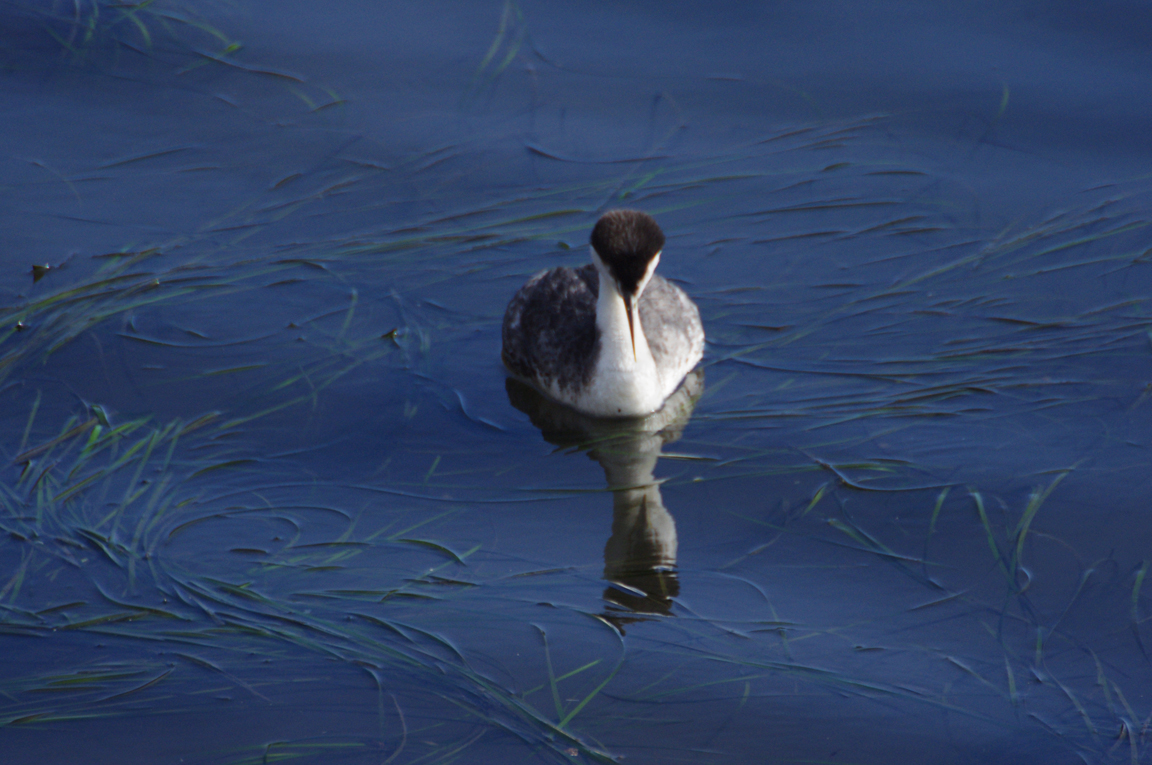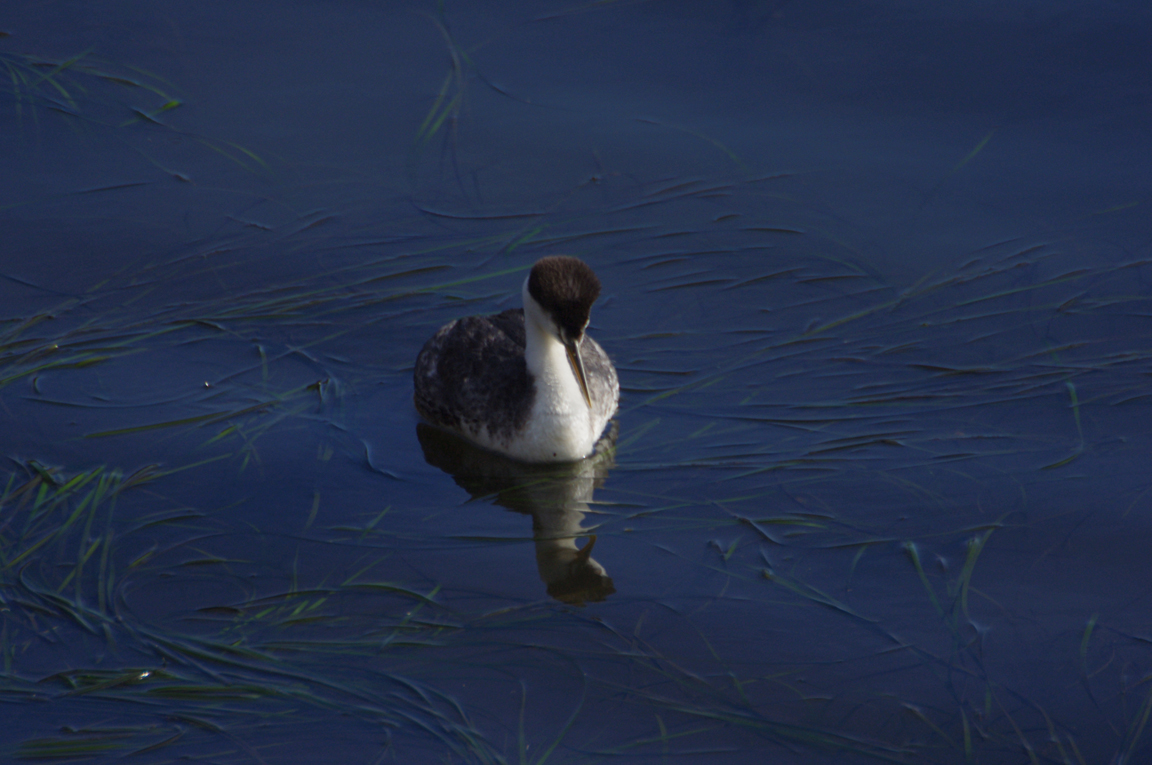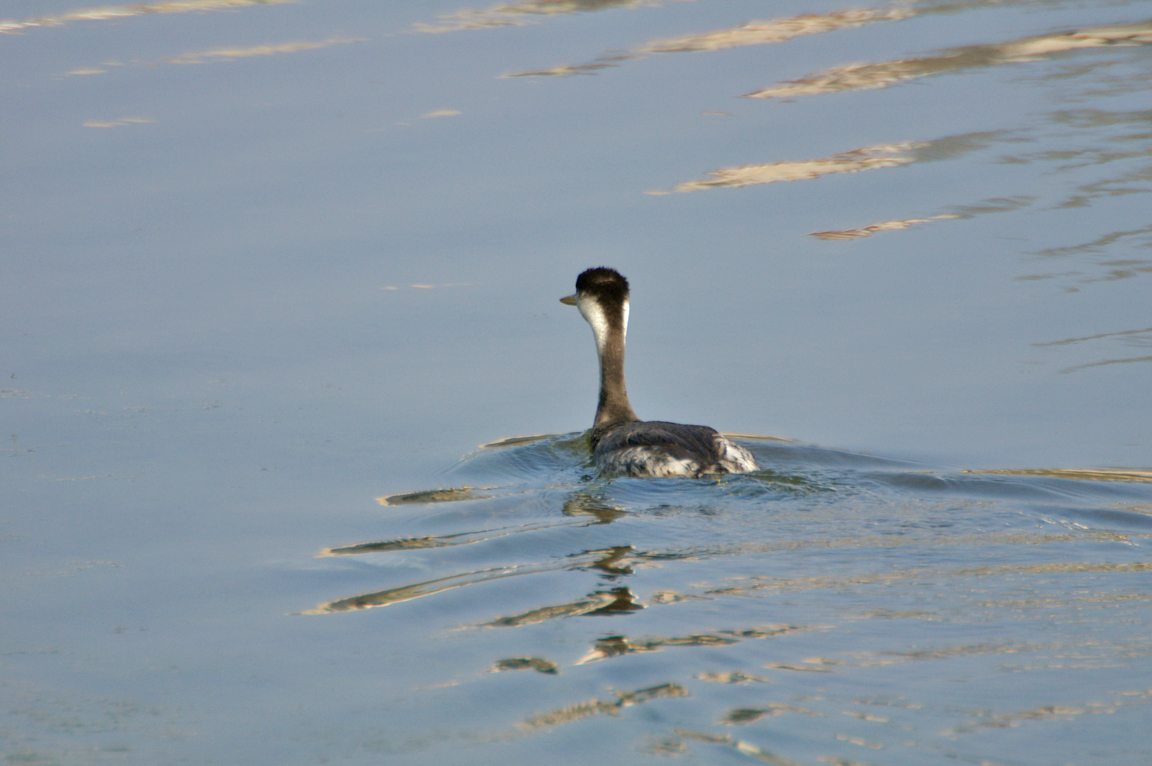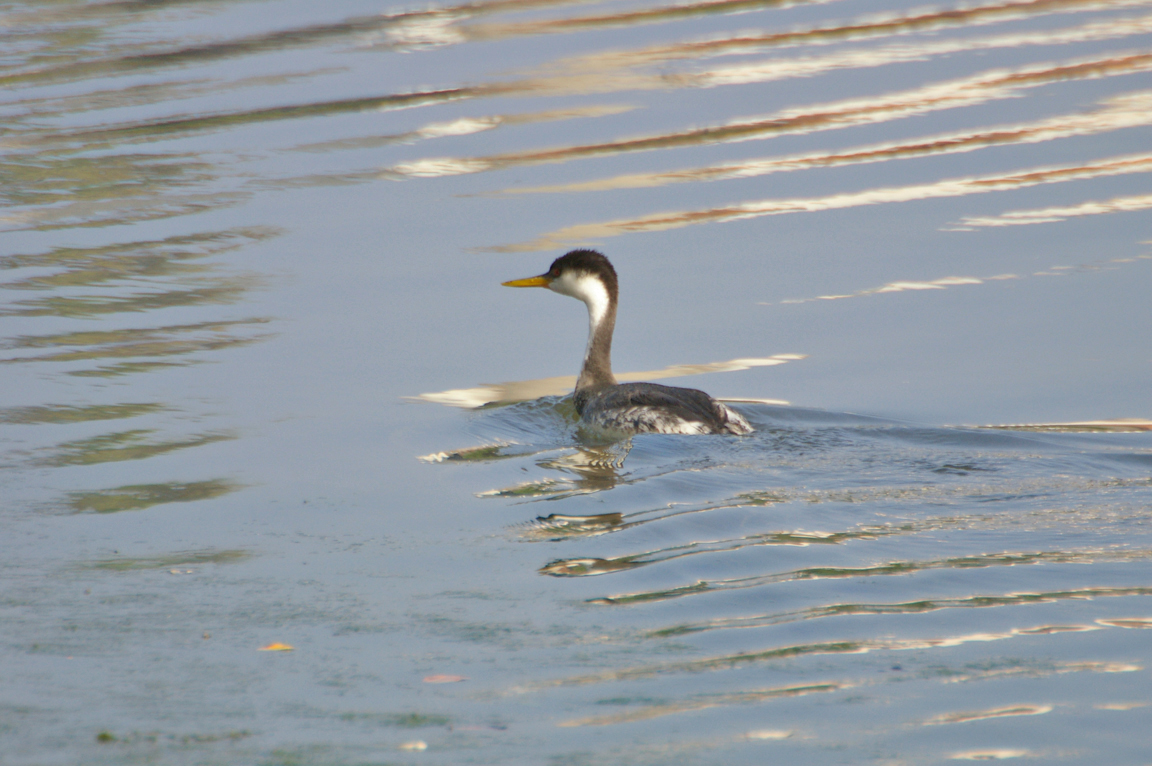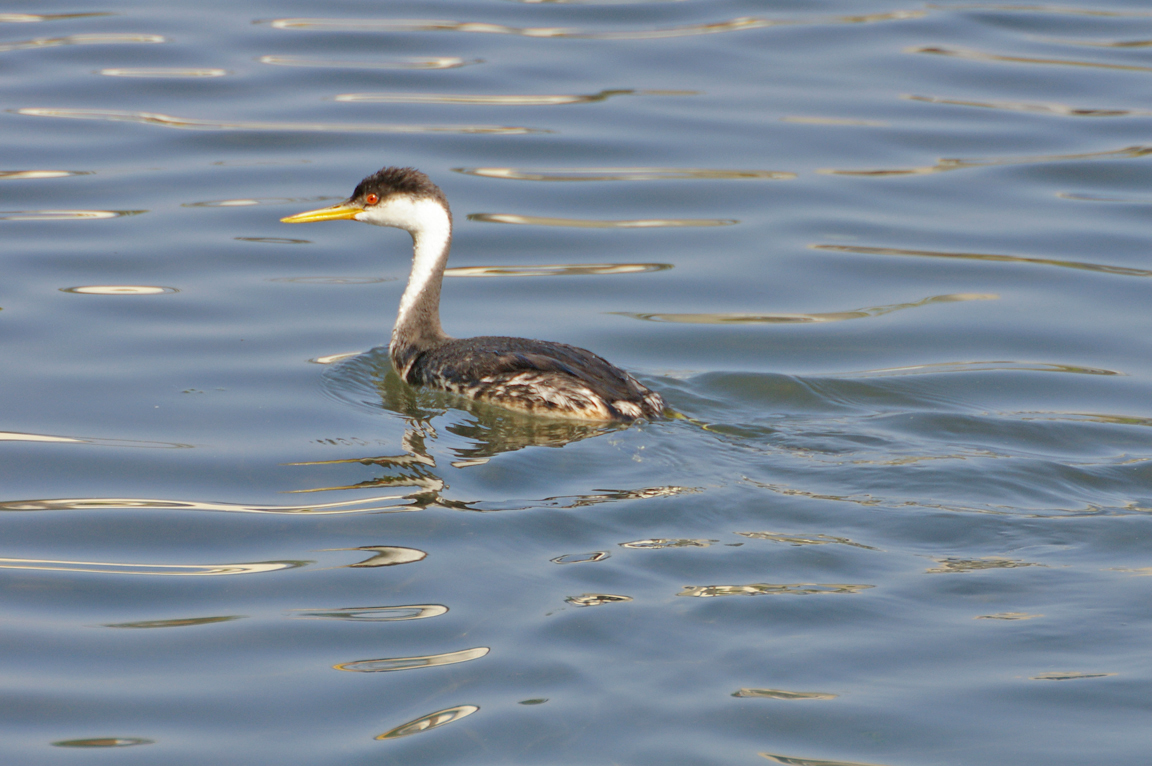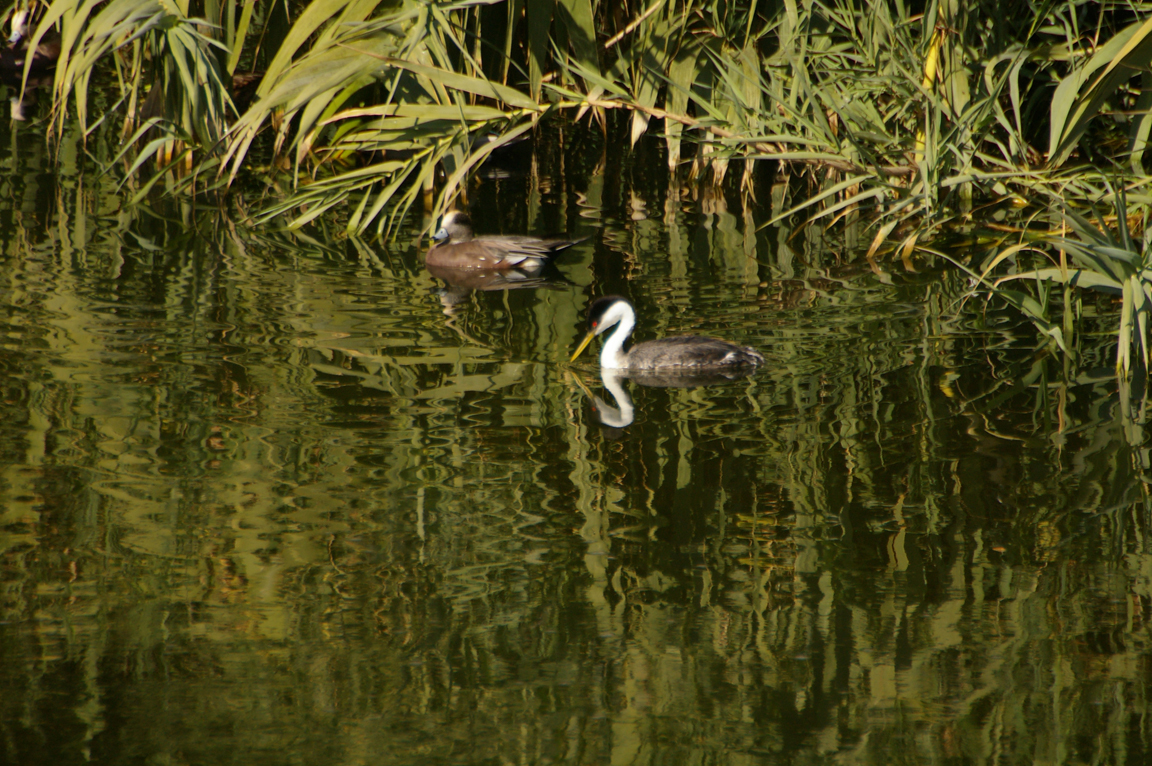|
|
|
 |
Western Grebe
|
| Aechmophorus occidentalis | |
A large black-and-white grebe, the Western Grebe breeds in lakes and ponds across the American West and winters primarily off the Pacific Coast.
Interesting Information
-
The Western Grebe was first described in 1858 by Sir William Lawrence, an English surgeon and biologist.
-
Folk names for this bird include Dabchick, Swan Grebe, and Swan-necked Grebe.
-
It is the largest North American grebe.
-
A group of grebes are collectively known as a "water dance" of grebes.
Description
Adult Description
-
Size: 55-75 cm (22-30 in)
-
Wingspan: 79-86 cm (31-34 in)
-
Weight: 800-180 g (28.24-6.35 ounces)
-
Medium-sized waterbird.
-
Black back and face.
-
White neck and underside.
-
Long neck.
-
Long, thin bill.
Sex Differences
Sexes similar.
Immature
Similar to adult.
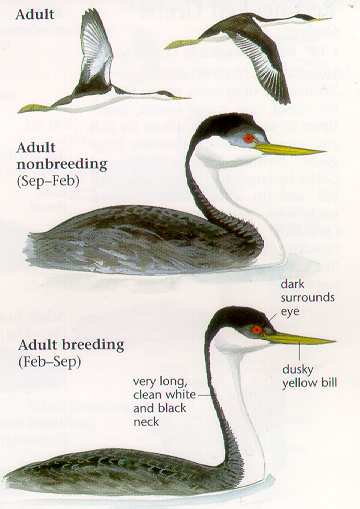
Photo taken from: The Sibley Field Guide by David Allen Sibley
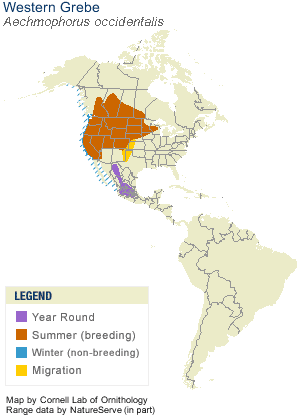
© 2003 Cornell Lab of Ornithology
|
Habitat |
|
Preferred habitats include large lakes with reeds or rushes, shallow coastal bays, and estuaries. |
|
Behavior |
|
Dives under water to spear fish with its long bill. |
|
Food |
|
Eats fish, insects, mollusks, and crustaceans |
Taxonomy
| Kingdom: | Animalia |
| Phylum: | Chordata |
| Subphylum: | Vertebrata |
| Class: | Aves |
| Order: | Podicipediformes |
| Family: | Podicipedidae |
| Genus: | Aechmophorus |
| Species: | Aechmophorus occidentalis |
| Aechmophorus occidentalis ephemeralis | |
| Aechmophorus occidentalis occidentalis |
Similar Species |
|
Clark's Grebe is extremely similar, but has white in front of the eyes and a brighter yellow bill. Winter Red-necked Grebe is gray and dingy, not bright white. Loons are shorter necked and have solidly dark wings. |
|
Bird Sound |
|
Shrill whistle and rolling croak. |
|
Eggs look like this |
|
Photo taken from: ARCTOS Collaborative Collection Management Solution |
Videos
Western Grebe
